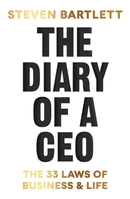Kiira Motors intends to be vehicle titan by 2030


“It was amazing seating close to the Kyabazinga, and, as the driver, it was a memorable experience I will cherish forever,” recounts Richard Madanda about his experience of driving the Kyabazinga, His Majesty William Wilberforce Gabula Nadiope IV, on the day he exchanged nuptials with Jovia Mutesi, the Inebantu. As the Kyabazinga and the Inebantu soaked in the cheers of an adoring crowd on the road, Madanda drove them in an open roof carriage.
The trained engineer was the designated carriage operator at Kiira Motors Corporation who undertook the special assignment from the Kyabazinga to build the unique carriage.
Madanda, the director of product development at Kiira Motors Corporation, explains that following the guidance from the Kyabazinga’s coterie of friends and advisors, the Kiira team designed a boat-shaped carriage. Its finishing was decked in the royal colours of blue and gold.
Kiira Motors Corporation is a mobility enterprise with a core objective of solving current and future mobility challenges.
This includes non-conventional mobility solutions such as the Kyabazinga royal carriage.
Madanda told Saturday Monitor that the corporation was approached by the Oba Kyabazinga 10 days before the royal wedding. The request seemed simple enough: design and manufacture the royal carriage.
“It is important to note that this call came to Kiira Motors because of the demonstrated capabilities. I, therefore, believe the Oba Kyabazinga wanted something special of their own, because Kiira Motors is located in Busoga Kingdom,” Madanda further disclosed in an interview.
The carriage was designed as a five-seater to accommodate the Kyabazinga, Inebantu, maids and a driver.
“It is a non-powered three-axle, 10-wheeled and steered carriage. The team put together the boat-shaped carriage because the Busoga Kingdom headed by the Oba Kyabazinga is surrounded by water bodies, including Lake Victoria, Lake Albert and River Nile among others,” Madanda explained.
He added: “We sourced materials from the local market because we had limited time to wait for any part which was not available on the local market. Therefore, we designed this Royal Carriage to use local materials.”
To ensure it was over and above technical readiness, the team carried out comprehensive road tests at the Kiira Vehicle Plant.
These were mainly geared at stress-testing the brakes, the steering system, the load-carrying capacity and traction.
A success story?
The royal carriage tells the story of an indigenous company. The engineering of Kiira vehicles is Ugandan.
“We also manufacture the frames and bodies of the vehicles. We source steel, paints, fabrication consumables, silicones, assorted bolts, nuts, rivets from the local suppliers (Doshi, Plascon…etc) because they are readily available and can be sourced without a long lead time unlike the imported parts,” Madanda purred as he told Saturday Monitor about the corporation’s growing Ugandanness.
He also disclosed that Kiira Motors imports chassis systems, electricals and electrical systems.
The important parts are from China, Kiira Motors’ technology partner with a 15-year technology transfer agreement.
The director of the product development said they can locally produce seats, glass such as the windshield and side glass, the dashboards, tyres, wiring harnesses, hardware and software components, all auxiliary components, brake pads, and battery banks.
Kiira Motors’ target is to have 65 percent of the vehicle parts locally produced by 2030. In the short term, Kiira Motors envisages commissioning a vehicle plant and production of buses for clients and tooling it to realise the 5,000 vehicles’ production per year.
In the short-medium term, per Madanda, the corporation intends to localise key mobility components, set up social amenities at the Kiira Vehicle Plant, establish a smart, reliable and convenient charging network, support the establishment of efficient, integrated sustainable, safe and inclusive mass transit systems in Uganda, skilling and reskilling of industry value chain actors.
“Medium-term is market system development and establishment of market presence in regional markets, training 6,000 e-bus operators,” he further disclosed, adding, “Long-term, we’d like to operationalise the Mobility Industry and Technology Park in Kayunga aimed at attracting mobility actors for localisation of key mobility components.”
Thus far, the motors corporation has produced three concept vehicles namely Kiira EV, Kiira EVS, Kayoola Solar Bus, cars and 39 Kayoola buses.
It has produced mobility vessels like the three-in-one trike, capable of hauling agricultural produce, generation of power and also pumping of water.
The clients are private citizens and institutions including but not limited to Uganda Airlines, Uganda Civil Aviation Authority, and National Enterprise Corporation. The corporation is the 14th African vehicle manufacturer.
“Apart from Ghana, where they have some locally inspired vehicle projects, the rest of the African countries are either contract manufacturing or have franchises of the global manufacturers such as Toyota, Ford, TATA etc in South Africa. The other African countries with World Manufacturer Identifiers and VIN systems are South Africa, Angola, Ethiopia, Kenya, Nigeria, Algeria, Morocco, Mauritius, Tunisia, etc,” Madanda told Saturday Monitor.
“Designing a new vehicle can take varying times depending on the resource envelope available to the new vehicle development. At Kiira Motors Corporation, we can typically take six months to a year to design a new vehicle. Production of a vehicle under series production takes 14 days. The entire production cycle may involve sourcing of parts including sourcing of parts from abroad. This could take three months in an optimised process,” he added.
At the moment, the corporation is working with private and government entities to identify and set up model charging stations.
Kiira Motors is already in talks with Uganda Civil Aviation Authority to set up at the airport and has engaged the Jinja City Council which has offered land to set up the charging stations.
The corporation is setting up the first charging station in collaboration with Victoria Motors in the industrial area.
“Eventually,” Madanda said, “it is important to note that we want private actors to set up and operate these just like the private fuel station business. Our role as Kiira Motors is to set up the model charging stations.”








0 Comments